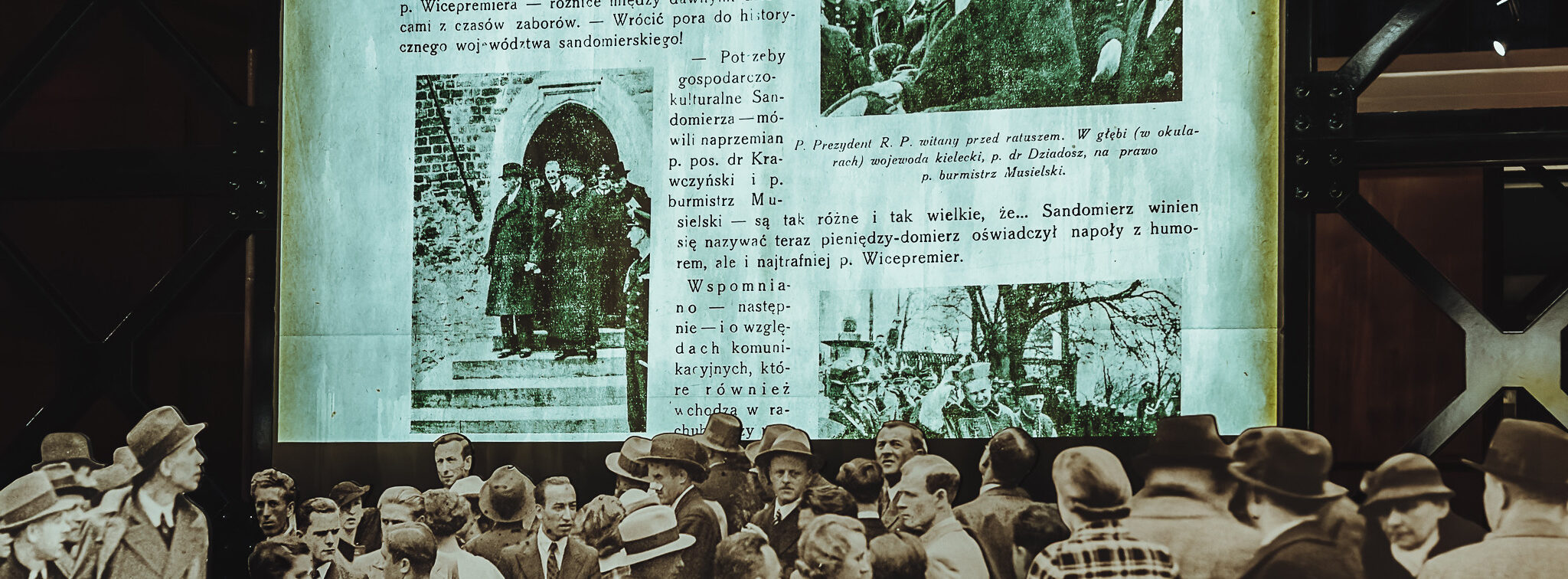Muzeum COP
2022
Tworzenie wystawy, takiej jak Muzeum COP, wymaga lat przygotowań i wysiłku. Zanim pierwsi zwiedzający przekroczą próg muzeum, zespół inicjatorów, wizjonerów, historyków, architektów, budowniczych i innych specjalistów współpracuje, aby urzeczywistnić pomysł. Ta podróż zaczyna się od wizji, która jest dopracowywana przez lata planowania i współpracy. W tym przypadku zaowocowała ona fascynującym, atrakcyjnym i pouczającym doświadczeniem dla gości. Doświadczeniem, które jest ucieleśnieniem wizji ojców COP (Centralnego Okręgu Przemysłowego) – najważniejszego projektu II Rzeczypospolitej Polskiej, kształtowanego w latach 1936-1939, obejmującego 15% terytorium Polski i zamieszkiwanego przez 17% polskiej ludności. Projekt COP przyczynił się do ogromnego rozwoju polskiego przemysłu, a nawet jeśli został przerwany przez II wojnę światową, to po jej zakończeniu w 1945 roku został odbudowany i rozszerzony.
„Byliśmy zaangażowani w projekt Muzeum COP od samego początku – konsultując i pomagając kształtować jego pierwszą wizję, która położyła fundamenty pod długoterminową współpracę.”
Wystawa została zrealizowana dzięki instytucjonalnym partnerstwom z różnymi firmami. Równolegle z pracami budowlanymi i scenograficznymi wykonywanymi przez członków konsorcjum, starannie zaprojektowaliśmy, wyprodukowaliśmy i wdrożyliśmy treści prezentowane w całym muzeum. Wspólny wysiłek pozwolił na stworzenie spójnego i angażującego doświadczenia dla odwiedzających, z interaktywnymi ekspozycjami, instalacjami multimedialnymi i immersyjnymi przestrzeniami, które przenoszą gości w przeszłość.
„Historia Centralnego Okręgu Przemysłowego pokazuje, że ludzie mający wizję i pragmatyczne podejście mogą dosłownie przenosić góry przy pomocy innych.”
Wystawa ukazuje bogatą historię gospodarczych, przemysłowych i technologicznych osiągnięć Polski w okresie międzywojennym. Dzięki starannie dobranym eksponatom i angażującym prezentacjom multimedialnym, muzeum oddaje istotę Centralnego Okręgu Przemysłowego i jego wpływ na rozwój kraju. Obejmuje ponad 170 infografik, liczne filmy i animacje, interaktywne aplikacje multimedialne oraz wielojęzyczne przewodniki audio, które zgłębiają różne aspekty historii okręgu – od jego powstania, przez tworzenie, wynalazki, codzienne życie mieszkańców, aż po jego ostateczny upadek.
„Najważniejsze punkty wystawy obejmują instalację multimedialną z nagranymi na nowo wywiadami z inżynierami, naukowcami, wynalazcami i organizatorami zaangażowanymi w powstanie okręgu, a także awatary jego twórców.”
Byliśmy również odpowiedzialni za immersyjne środowiska, które oddają atmosferę pieca hutniczego, zapory wodnej i wnętrza samolotu produkowanego w okręgu. Wystawa obejmuje również sekcje poświęcone rozwojowi przemysłu zbrojeniowego i lotniczego w regionie, oferując wgląd w procesy produkcyjne oraz technologie, które powstały w tamtym czasie.
Muzeum COP nie tylko jest hołdem dla tych, którzy przyczynili się do jego powstania, ale także przypomina o znaczeniu zachowania i pielęgnowania tego cennego fragmentu historii dla przyszłych pokoleń. Dzięki regularnej konserwacji, aktualizacjom oraz włączaniu nowych odkryć i innowacji, muzeum nadal będzie oferować odwiedzającym angażujące i edukacyjne doświadczenie, które ukazuje trwały wpływ Centralnego Okręgu Przemysłowego na polską gospodarkę i społeczeństwo.
„Pozostając wiernym pierwotnej wizji i kontynuując współpracę z ekspertami i partnerami, muzeum COP pozostanie żywotną i istotną instytucją przez wiele lat, ożywiając obszar, który wcześniej nie był uznawany za atrakcję turystyczną.”











